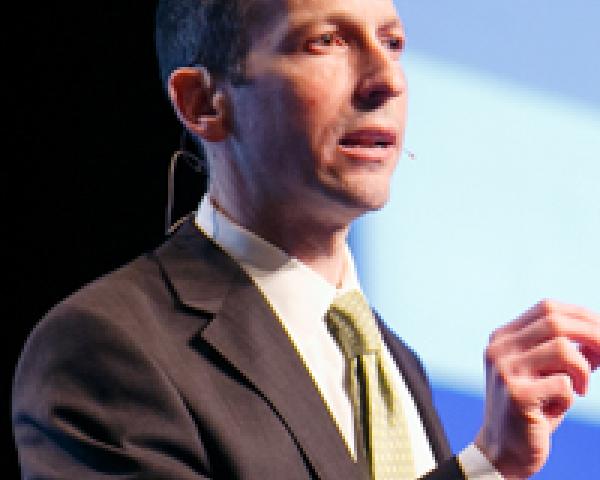In 2008-09, during the height of the Great Recession – a time when the U.S. economy was in a meltdown and every auto manufacturer was seeing sales plummet – Hyundai Motors increased its market share by a remarkable 40%.
Understanding how Hyundai did it offers a valuable lesson to any company that’s trying to navigate a period of consumer crisis. Here’s how the story goes:
In October 2008, Wall Street and the banking sector began to implode, car sales fell precipitously and Hyundai sought an answer to a question that was vexing most auto industry executives during that dark time: Why weren’t people buying cars? Why weren’t they coming into showrooms? Why weren’t traditional car buying incentives (rebates and financing deals) – which were always effective in past economic slumps – driving foot traffic into the dealers?
To answer these questions, Hyundai executives did something extraordinary. They talked to their customers. Through those conversations, Hyundai was able to put its finger on exactly what was going on in consumers’ heads.
What Hyundai executives came to realize is that – even in the depths of a financial crisis – plenty of consumers were still interested in buying cars, and plenty of consumers still had the money to buy cars. But people were staying away from the dealer showrooms because they were afraid.
They were afraid that they’d buy the car, get laid off shortly thereafter and be saddled with car payments they couldn’t afford. (Remember, at this time in the U.S., the economy was shedding hundreds of thousands of jobs each month.)
With the benefit of hindsight, the fear might sound like common sense. Back then, however, the realization was an “Aha!” moment for executives, and it triggered an entirely new line of thinking at Hyundai around how to arrest, if not reverse, the sales decline.
The company shifted its focus from sales incentives to fear mitigation and tried to figure out how to eliminate (or at least alleviate) the emotionally charged worries that were keeping consumers away.
The answer lay in an entirely new offering that Hyundai rolled out in January 2009 and dubbed the “Job Loss Protection Program.” It was a guarantee whereby the automaker basically said to consumers: If you buy a car from us, and within one year you are laid off (for any reason at all), just bring the vehicle back and – no questions asked – we’ll forgive all remaining payments on the car.
This single tweak to their customer experience was a game changer. With the fear of job loss impacts removed from the purchase decision, consumers flocked to Hyundai dealers, boosting sales by double-digits, increasing market share by 40% and elevating the brand’s prominence in the marketplace to levels never before seen.
Hyundai weathered the Great Recession better than many other automakers. The approach the company used to accomplish that feat has clear relevance now, as both B2C and B2B companies navigate an even bigger consumer crisis triggered by the COVID-19 pandemic. To emulate Hyundai’s approach — so that you better engage your target market, as well as strengthen loyalty with existing customers — follow this three-part formula:
1. Look at the world from the customer’s perspective.
This is, of course, the golden rule of customer experience design. ts importance, however, is accentuated during challenging times, when customers are thinking and feeling in a way that’s very different from normal. Understanding those dynamics is critical to adjust your customer experience so it resonates even more strongly with your target clientele.
Doing this effectively requires truly immersing yourself in the customer’s perspective, which is not something that can be achieved solely through dry research surveys and satisfaction studies. In times of crisis, teasing out what’s on your customer’s mind requires getting close to them (physically or virtually), stepping into their shoes and seeing the world through their eyes.
Hyundai accomplished this by having in-depth conversations with sales prospects and customers. Other avenues for immersing yourself in the customer perspective include consulting with front-line employees (as they can tell you what they’re hearing from customers), as well as actually observing customers as they interact with your business (to spot existing pain points or new ways to better serve them). All of these insight-gathering techniques help reveal those not-yet-obvious consumer needs that fuel customer experience innovation.
See also: The Messaging Battle on COVID-19: Are Insurers Losing?
2. Pay attention to emotional needs, not just rational ones.
In the two-year life of the Hyundai Job Loss Protection Program, only 350 cars were returned to the company – a minuscule percentage of overall sales, and a statistic that belies the impact the program had on the automaker’s brand recognition and business success.
The fact that so few cars were returned under the program, despite its tremendous popularity, suggests that consumers’ perceived risk of job loss (and the resulting impact on one’s ability to make car payments) was much greater than the actual risk of that outcome. What that really means is that the true value of the Protection Program was in its ability to satisfy consumers’ emotional needs, as opposed to rational ones.
That doesn’t make it any less of a beautiful solution to what consumers clearly viewed as a real problem. Indeed, the program underscores the importance of not just thinking in terms of rational, logical requirements that customers might have during times of crisis. It’s equally important to satisfy their emotional requirements, which in the case of Hyundai amounted to the mitigation of fear. For other businesses (or other types of crises), those emotional considerations might be addressed, for example, by giving customers peace of mind, by making them feel like they’re part of a community or by instilling in them a sense of pride or confidence.
Whatever the tactics, the key point is that in a crisis (as we’re experiencing with the COVID-19 pandemic), people are in a vulnerable, emotionally charged state. While creating emotionally resonant customer experiences is important at any time, it’s even more vital during difficult times, and presents a unique opportunity to create an indelible, positive impression on the people you serve.
3. Advocate for your customer in tangible ways.
Being an advocate for your customer means putting their interests ahead of yours. Importantly, it’s not about good annual report copy, website content or an advertising campaign that touts “putting your customers first.” It’s about showing customers that this company’s got your back, that we’re in your corner. It’s rare that people see companies do this, so, when it does happen, it creates a memorable peak in the customer experience that helps cultivate loyalty.
The impact of customer advocacy, however, is amplified during crises because of the vulnerable position in which many of your customers will find themselves. When you’re in a stressful situation, when you’re in a pit of despair due to tough circumstances, if someone extends a hand to help you get out of that quandary, it’s an engaging gesture for which you’ll be eternally grateful. That’s the power of advocacy in forging new customer relationships, as well as cementing existing ones.
The Hyundai Job Loss Protection Program transferred risk from the customer to the company. It was a tangible demonstration of advocacy by the automaker – a gesture of support and goodwill, even if it was grounded in a very business-focused desire to get consumers back into the showrooms. (No apologies for that are necessary, because the fact is, over the long-term, customer advocacy is simply good for business.)
In the current COVID-19 pandemic, you can spot those organizations that are employing Hyundai-like tactics. Instead of responding to the crisis by invoking platitudes in one of those “we’re here for you” broadcast e-mails, the smart organizations are being thoughtful. They’re thinking carefully about what people are going through, and they are making tangible changes to their customer experience as a result. Examples include:
- Australian supermarket giant Woolworth’s, which in mid-March was among the first retail stores to establish dedicated shopping times for elderly and disabled customers. Their move was in response to panic buying by the general public, which left vulnerable populations struggling to get their basic necessities. Woolworth’s made it easier for them to do so.
- American Family and Allstate insurance, which, within hours of one another, were the first U.S. auto insurers to announce they’d be refunding a portion of their policyholders’ insurance premiums. Both insurers noted that people were driving far less (due to stay-at-home orders), and this was a way to help ease some of the financial strain that their customers were experiencing.
- Scholastic, which recognized the difficult task that teachers, parents and children faced as they moved to remote schooling. In response, the company curated an online library of virtual lesson plans to help instructors and caregivers minimize the disruption to kids’ education.
- U-Haul, which saw an opportunity to help scores of college students who, on short notice, were instructed to vacate their dormitories as schools shut down to prevent the spread of COVID-19. The moving and storage company offered any college student in the U.S. and Canada 30 days of free storage while they figured out what to do with their belongings.
These are all examples of companies that carefully considered how the landscape in which they operated had changed, and how the lives of people in their communities had been altered. Were these firms being purely altruistic? Perhaps not, but that doesn’t diminish the significance of their actions.
These companies are, after all, for-profit entities. It’s okay if they aspire to earn a better brand reputation. It’s okay if they hope to attract some new customers via their actions. The point is, they’re doing it in a noble way, a way that genuinely aids people in the short term, even while potentially helping the company in the long term.
Their actions were guided not by what was legally required, not by what a regulator mandated and not even by what many of their customers (or non-customers) may have reasonably expected. Their actions were guided by what was fair, what was right and what served the best interests of consumers.
See also: COVID-19: Stark Choices Amid Structural Change
Critics might note that some of these firms’ customer experience enhancements were quickly copied by competitors. That’s true, but there is a first-mover advantage here. Those businesses that drive experience innovations (rather than follow them) tend to be viewed by consumers in a more positive light. (Hyundai’s 2009 Job Loss Protection Program was copied by other automakers within a few months, but none achieved the notoriety that Hyundai did.)
Furthermore, while a single, specific experience enhancement may be easy to copy, what’s much harder to replicate is the outside-in mode of thinking that customer experience leading firms possess. That’s where they derive long-term strategic advantage, because they’re the ones that are perpetually devising new and improved customer experiences that become a hallmark of their brand.
With every crisis comes opportunity. Not an opportunity to exploit a bad situation for business gain, but, rather, an opportunity to enrich the lives of those you serve by genuinely and selflessly helping them during a time of need. In a crisis, that’s how you cultivate customer loyalty, that’s how you generate positive word-of-mouth and that’s how you come out stronger on the other side.
The article was previously published here.








